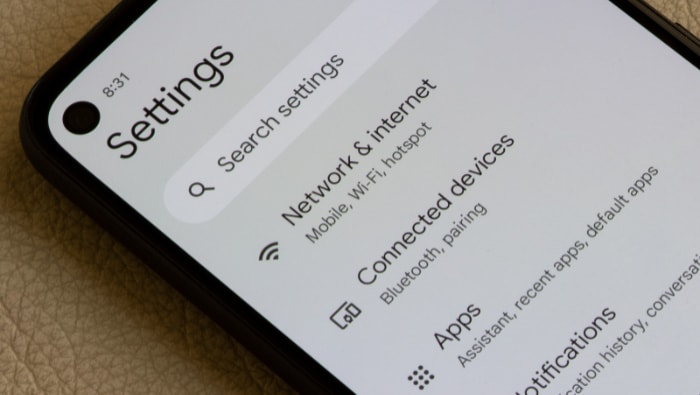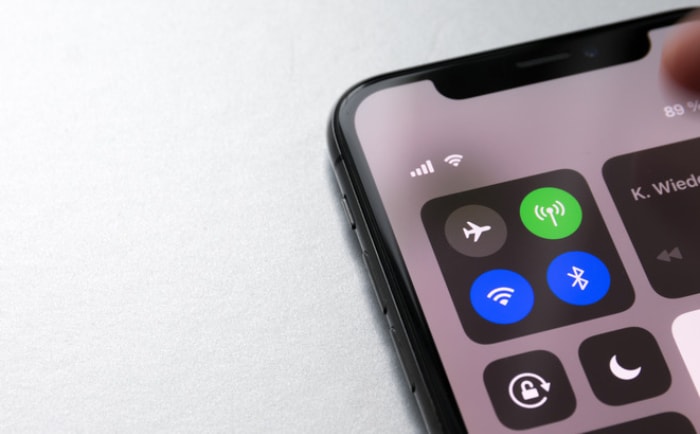What Is a Hotspot? How They Work & How to Use One

The term Wi‑Fi hotspot is used everywhere, but its precise meaning often gets lost between the technology and the service it provides. These connection points grant internet access in many forms, from the public networks available in coffee shops and airports to the private signal broadcast from your own smartphone.
Knowing how a hotspot differs from a standard Wi-Fi network or an access point is important for both security and performance.
What Is a Wi-Fi Hotspot?
In technical terms, a hotspot is a point of access where devices can connect to the internet through a Wireless Local Area Network (WLAN). The network is established by a router or another device connected to an Internet Service Provider (ISP).
This setup creates a small, localized area where a Wi-Fi signal is broadcast, and any compatible device can join the network to access the internet.
Hotspot vs. Wi-Fi vs. Access Point
These terms are often used interchangeably, but they refer to different components of wireless networking.
- Wi-Fi is the technology that allows devices to exchange data wirelessly using radio waves. It is the standard that makes wireless connections possible.
- An access point is the hardware, such as a router, that creates the wireless signal. It broadcasts the Wi-Fi network that devices can detect and connect to.
- A hotspot is the physical location or the overall service where internet access is provided via an access point. It is the complete system that allows you to get online.
Public vs. Private Hotspots
Hotspots are generally categorized as either public or private, based on who operates them and who can access them.
- Public hotspots are available in places like coffee shops, hotels, libraries, and airports. They offer internet access to the general public, either for free or for a fee.
- Private hotspots, often called personal hotspots, are created by an individual for their own use. A common example is using a smartphone’s “mobile hotspot” feature to share its cellular data connection with other devices. Dedicated portable hotspot devices also create a private network.
How Hotspots Work

A hotspot functions by creating a wireless network that other devices can join. The source of the internet connection can vary, with the most common method being a cellular data plan. In some situations, a hotspot can also be used to establish a local network for communication between devices without any internet access at all.
Mobile Hotspots and Tethering
Mobile hotspots, a feature built into most modern smartphones, operate by converting a cellular data connection into a Wi-Fi signal. The phone essentially acts as a portable wireless router, taking its 3G, 4G, or 5G mobile data and broadcasting it as a Wi-Fi network.
Nearby devices like laptops or tablets can then connect to this network to get online. The same principle applies to dedicated portable hotspot devices, which are designed specifically for this purpose and often provide a more stable connection for multiple users.
Local-Only Network Creation
Certain platforms and applications allow a device to generate a hotspot that facilitates local device-to-device communication without an internet connection. This creates an isolated wireless network where connected devices can interact directly with each other.
This functionality is useful for tasks such as sharing files between two phones, collaborative gaming, or operating peripherals that require a direct Wi-Fi link without needing to route data through the wider internet.
Network Discovery and Authentication
For a device to connect to a hotspot, it must first discover the network. Every hotspot broadcasts a unique name, called the Service Set Identifier (SSID), which appears in the list of available Wi-Fi networks on a device.
Once the user selects the correct SSID, the system typically requires authentication. This is usually a password that secures the network, ensuring that only authorized users can join the connection and access the internet or local network resources.
Types and Use Cases
Hotspots serve a variety of functions depending on their environment and purpose. They can provide personal internet access while traveling, offer a public service in commercial venues, or facilitate direct communication between nearby devices.
Each type addresses a specific need for wireless connectivity.
Mobile and Portable Hotspots
These are personal solutions for getting online from almost anywhere. Smartphone tethering is the most accessible form, allowing a user to share their mobile data with a laptop or other device.
For more demanding situations or multiple users, dedicated portable hotspot hardware offers a more robust and reliable connection. Such devices are invaluable for staying productive in cars, on trains, or in hotels where the provided Wi-Fi is slow or nonexistent.
Public Hotspots
Found in many public and commercial locations, public hotspots offer internet access as an amenity for customers and visitors. Venues like coffee shops, airports, hotels, and libraries commonly provide these networks.
Their purpose is to offer general internet connectivity, allowing people to check emails, browse the web, or work remotely while away from their home or office. Access is often free, though some locations might require a purchase or have time limits.
Local Device Networking
In some scenarios, a hotspot is used to create a self-contained network for local communication only, without any connection to the internet. This capability is useful for applications that require direct device-to-device interaction.
Examples include transferring large files between two phones without using mobile data, playing multiplayer games on separate devices in the same room, or connecting to smart accessories that operate on their own local Wi-Fi network.
Setup and Management

Activating and managing a personal hotspot is a straightforward process on most devices, though it requires attention to configuration to ensure security and control costs. The main settings are typically found within the device’s system preferences, where you can enable the feature, customize its settings, and monitor its use.
Enabling and Configuration
To create a personal hotspot, you first need to enable the feature through your smartphone or portable hotspot’s settings menu. On most operating systems, this option is labeled as “Personal Hotspot” or “Tethering.”
Once activated, you can configure the network by setting a custom name, known as the SSID, and creating a secure password. Establishing a strong, unique password is a critical step to prevent unauthorized users from connecting to your network and consuming your data.
Network Visibility and Control
Proper management of your hotspot helps maintain both security and performance. Giving your network a clear and recognizable SSID makes it easy for your own devices to find and connect.
Many devices also provide basic control features, such as the ability to see a list of all connected devices. This visibility allows you to confirm that only authorized users are on your network. Some systems also provide status notifications, informing you when a device connects or disconnects from your hotspot.
Data Plans and Associated Costs
Using a smartphone or a dedicated portable device as a hotspot relies on a cellular data plan. All internet activity from connected devices consumes data from this plan, which can add up quickly.
Mobile carriers often have specific terms for hotspot usage; some plans include a dedicated allotment of high-speed hotspot data, after which speeds may be significantly reduced. Exceeding data limits can lead to additional charges, so it is important to be aware of your plan’s details and monitor your data consumption.
Security, Performance, and Troubleshooting
While hotspots provide valuable connectivity, their use involves important considerations for security, connection speed, and potential technical problems. Public networks carry inherent risks, performance can fluctuate greatly depending on several factors, and connection issues can sometimes arise that require basic troubleshooting.
Security Considerations
Public Wi-Fi hotspots, such as those in cafes or airports, are generally less secure than private networks. They are often unencrypted, meaning that data sent over the connection could be intercepted by malicious actors on the same network.
It is wise to avoid accessing sensitive information, like online banking or personal email, when connected to a public hotspot. For enhanced security, using a Virtual Private Network (VPN) can encrypt your traffic and protect your data.
In contrast, a personal hotspot that is secured with a strong password offers a much safer connection.
Performance and Reliability
The speed and stability of a hotspot connection depend on multiple variables. The underlying network technology is a major factor; a 5G connection will generally deliver much faster speeds than 4G or 3G.
Signal quality also plays a crucial role, as a weak cellular signal will result in a slow and unreliable hotspot. The capabilities of the hotspot device itself and the number of concurrent users can also impact performance.
A connection will slow down significantly if multiple devices are simultaneously engaged in high-bandwidth activities like streaming video.
Common Issues and Troubleshooting
Users may occasionally encounter problems with hotspot functionality. A common issue is a device failing to connect or having no internet access despite being connected.
Sometimes the hotspot feature may stop working after a software update on a phone or connecting device. Basic troubleshooting steps often resolve these problems.
A good starting point is to restart both the hotspot device and the connecting device. You can also try turning the hotspot feature off and on again.
Checking the hotspot settings to confirm the password and network name are correct is also a useful step.
Conclusion
A Wi-Fi hotspot is fundamentally the service that delivers internet access at a specific location, a concept distinct from the Wi-Fi technology itself or the access point hardware that creates the signal. Recognizing the different operational modes, from public networks to portable personal hotspots and local-only connections, allows a user to select the best option for any situation.
With this information, anyone can more effectively set up a secure connection, manage it properly, and ensure it remains a reliable tool for staying connected.


